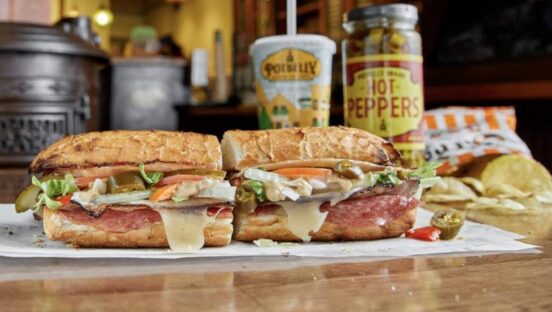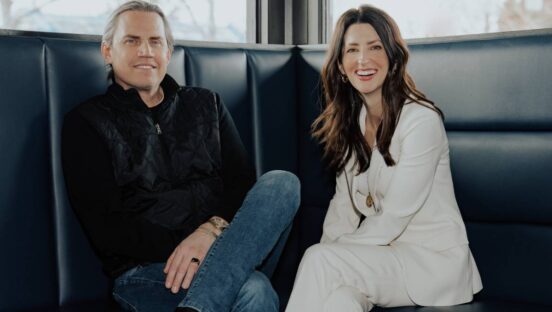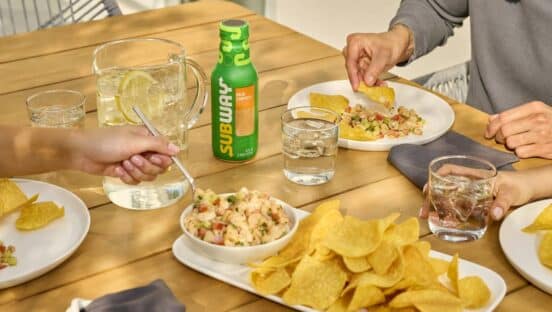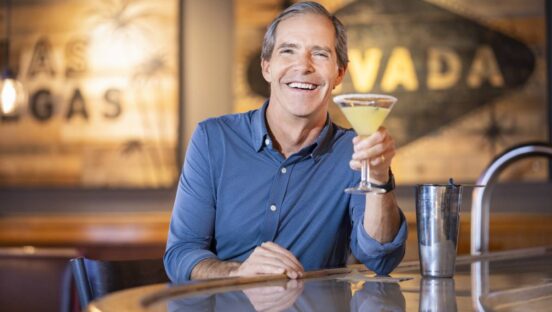Bob Wright’s impression of Potbelly had a familiar tone to it. Few brands draw from bases as deep as the sandwich brand, which opened in 1977 in Peter Hastings’ Lincoln Park antique shop. It didn’t begin growing until a regular, Bryant Keil, purchased the concept from Hastings and scaled it from one to 250 stores over the next 12 years. It reached double-digits in 2002 as Potbelly left Chicago for the first time, opening in Washington, D.C. Unit 100 arrived three years later, and the company went public in 2013.
Along the way, Potbelly carried its Underground Menu, fresh-baked cookies, and hand-scooped milkshakes to fresh audiences as it worked to stoke that history.
Yet Potbelly’s cult-like fanbase hasn’t always flowed to top-line success. When Wright, a former EVP and COO of Wendy’s, assumed his CEO post in summer 2020, it was a brand known as much for its potential as its performance. “For whatever reason,” Wright says, “It just hadn’t realized it.”
Wright arrived in the mouth of the pandemic. Potbelly wasn’t alone with its troubles, which were more pronounced across café-style fast casuals than fast food. Potbelly’s same-store sales dropped nearly 70 percent that March and the company cautioned investors it could permanently shutter up to 100 corporate units. Before getting into what actually happened, it’s worth flipping back another chapter. Potbelly’s turnaround wasn’t a COVID-triggered task.
The brand had a plan called “Project Aurora” in place pre-virus. Aided by a consulting firm, Potbelly built a “state of powerful tech-based consumer insights” to drive progress. This included everything from menu optimization to quality control to revamped advertising. Also, a “Shop of the Future” model that closed the circle. Sales on the top line dipped 3 percent across 2019 and ran negative every quarter from Q1 2017 to Q4 2019, before the COVID crisis entered the picture. Growth halted in Q3 2019 as the company redirected efforts.
Things had begun to improve somewhat on the doorstep of lockdowns. A Q4 2019 comps decline of 0.1 percent was Potbelly’s best quarter in three years. The brand outperformed the industry in traffic and comps for 11 of 13 weeks, per Black Box Intelligence, and projected a return to positive same-store sales in Q1 2020.
Naturally, nothing about that opening period would prove to be in Potbelly’s crystal ball. Comps rose 2.6 percent across the first 10 weeks and yet still finished down 10.1 percent—a sign of how steep the COVID cliff truly was.
But all told, the chain Wright took helm of that summer was more than just a pandemic recovery project. It was a comeback years in the works. Potbelly’s fan-centric differentiation was a line circulated to investors for years—one that had yet to cash in.
Wright set course. “I think it’s important to [know] that before I was approached [for the CEO role], this is a brand I’ve always had a really strong affinity for,” he says. “… The brand is terrific. The food is great. The experience is unique. And when you get that combination of things in the same company, it’s a very defensible point of differentiation and that’s what gets you to grow.”
Wright began with a five-pillar strategy announced publicly in fall 2020: food quality at great value, positive work environment, customer experiences that drive growth, digitally driven awareness, and franchised-focused development. It was taking root behind the curtain. Company-owned same-store sales declined 21 percent in Q3 2020 and 19.4 percent in October, an improvement from a 41.5 percent slide in Q2. Additionally, the brand reached unit-level profitability and traffic soared 21 percentage points.
Those 100 potential store closures? It ended up at just 28, with 321 leases getting renegotiated.
Potbelly has been a rocket since.
Total revenues in full-year 2022 increased 19 percent to $452 million. Same-store sales climbed 18.5 percent and units averaged $22,464 per week—a record figure. Potbelly’s Q4 comps of 18.9 percent represented its seventh consecutive quarter of positive gains. Weekly average sales closed the year even higher—at $24,144 (or about $1.2 million on a yearly view). That number was $19,455 in Q1 2022.
To start fiscal 2023, the brand’s same-store sales lifted again (22.2 percent), making it eight straight.
“What we found is the brand love that we always knew was there, really comes to life with our Perks consumers,” Wright says. “And so, when you give them special treatment, they turn around and give us additional traffic.”
On the topic of growth, Potbelly headed into 2023 with signed development area agreements for 51 new shop commitments over the next seven to eight years. In Q1, there were 30, with plans to refranchise eight.
The genesis, Wright says, dials back to the same DNA that hooked him as a customer. If Potbelly couldn’t replicate craveable, high-quality food at a great value, it was going to drown in a beehive of sandwich chains. All of that equity curated over 46 years would become more nostalgia than reality.
“We had to focus on those experiences that would bring people back,” Wright says. “And frankly, our operations needed some attention, and we weren’t necessarily giving people the best reasons to come back. That’s where traffic growth comes from—your own experiences.”
Just like the entire restaurant field, Potbelly had to make the brand digitally available to do so.
The 12 months leading up to the end of fiscal 2021 were a turning point. Potbelly launched a simplified, value-enhancing menu (more on this later), upgraded its tech stack with a revamped app, website, digital ordering integration, and Perks loyalty program, as well as filling out its leadership team with a crop of new hires. In a perhaps less sexy, yet no less vital move, the chain fortified its payment solution as well.
“But it was all in recognition of where the customer was going,” Wright says. “We wanted to make sure we were more accessible to them, that they could use our digital assets.”
Potbelly’s previous app was a white-label version of somebody else’s—not an uncommon move for restaurant brands. The chain skinned an existing model and branded it. But it wasn’t designed for Potbelly. That flip can’t be understated, Wright says.
The new app and web experience mimics how customers progress when they order in-store. It flows through the same steps, which include picking a sandwich, choosing a size, and selecting the bread. “We’re having this dialogue with you when you come through the shops,” Wright says. “We needed to build a way that could happen in the digital environment and be smooth, with a lot less clicks, but still reflect the way that you would step through if you came inside the restaurant.”
Potbelly’s Perks loyalty program was rebuilt to unlock better data. The ability to earn points and redeem them isn’t where the flip happened for Potbelly; rather it was the ability to foster connection. There are tiers now that offer different experiences. Potbelly can pulse incentives to diners based on how they behave. There’s Perks-only promotion activity, like digital-exclusive deals—such as you see on National Cookie Day—that nurture a VIP-like experience over a straight discount. “And what we found is the brand love that we always knew was there, really comes to life with our Perks consumers,” Wright says. “And so, when you give them special treatment, they turn around and give us additional traffic.”
Digital represented 38 percent of revenue in Q4. Prior to the pandemic, it was single digits. Headed into the final stretch of 2022, Perks boasted north of 2.2 million members and added 115,000 users in just Q3. “It’s digitally targeted in ways that fit [customers’] usage of the brand. That’s when it feels like the customer has that experience and they start to feel like the brand really understands me and how I’m using their brand, and therefore it has a lot more upside in terms of frequency,” Wright says.
It’s a formula unfolding across the sector. Use digital promotions to spike acquisition and then follow through with a nurturing campaign that treats consumers differently as they start to develop a frequency pattern. To put in plainly, for Potbelly and countless others, it’s a capability that just wasn’t in the playbook a couple of years ago.
Franchising, menu changes, and more to come
Another unique trait of Potbelly, especially among its public, competitive set, is the brand’s makeup. As of December 25, 2022, there were 429 locations. Only 45 of them were franchise shops. The franchising program began around 2010 or so but never quite pieced together. Wright, who’s worked at Charley’s Philly Steaks, Checkers & Rally’s, and Domino’s, and was navigating operations for more than 6,000 North America Wendy’s at the end of his tenure, has been in the franchising space his entire career. He decided early on Potbelly would lean into franchising going forward. The company set a previous goal to refranchise roughly 25 percent of its corporate footprint mid-term and eventually ramp up annual franchise unit growth to at least 10 percent.
The big ticket: reach 2,000 stores in the U.S. over the next eight to 10 years and become at least an 85 percent franchised system.
This four-digit target didn’t emerge from the abyss. Potbelly conducted market holding capacity research for the entire country before it let investors in on the plan during a March 2022 quarterly call. The combination of shop development area agreements and refranchising forms the basis for the growth Potbelly has in mind. And all across a diverse lineup of inline, endcap, drive-thru, and nontraditional venues.
Wright says Potbelly used its 2020 stall to prepare to grow again. It started with going for the biggest return items on that five-pillar approach. There were two Potbelly bet on: the tech stack outlined earlier, and the menu.
Potbelly came into COVID already having done extensive work with the latter. In fall 2018, the company tested new menuboards at 58 locations and piloted, for the first time, the inclusion of combos and bundle offers. There was a pick-your-pair option and a make-a-meal choice. By February, the new, enhanced menuboards were systemwide. The biggest change, if you look at Potbelly’s center panel of the menu, was to take it down from 55 price points to 18. Management at the time called it, “one heck of a complicated thing.” It was referred to internally as “mission impossible.”
The reason boiled down to simple math. With 486 locations at the time, Potbelly had 680 unique menuboards in terms of size. It had to reprogram the point of sale, redo the company’s app, redo its website, change the loyalty program, and update the catering and delivery functionality for how customers pay.
When Wright walked in, customer data was pointing to a new roadblock—guests had a problem with Potbelly’s value equation.
“The reason we had been bleeding traffic was deeply rooted in what we had done to the value of the Potbelly experience,” he says. “It was with the food. And, basically, what do you get for what you pay.”
In some cases, guest feedback noted they didn’t like what they were paying (prices had gone up). But more vitally, they didn’t feel like the experience had kept up with the hikes. And in just as many instances, Wright says, people felt the food itself wasn’t matching the price point and Potbelly’s past. Again, it flashed the brand drift alarm Wright wanted to guard at all costs.
So Potbelly got to work. Unveiled in August 2021, the brand added a “skinny,” smaller size that lowered the entry point and enabled customers to create pick-and-pair options that better fit their appetites. Alongside, Potbelly made its original size bigger and its “big” even larger. It put more meat and cheese per inch in the larger sandwiches and “just dove in to give the customer more,” Wright says. “And course correct.”
Potbelly tested the platform “for months and months.” Data suggests the brand got it right. The skinny option in particular helped to reshape Potbelly’s accessibility. There were a fair number of lunch consumers who didn’t consider the brand approachable from a price perspective before, Wright says.
Potbelly took some 60 SKUs out in total—a move that ultimately shielded it a bit from commodity chaos in 2021 and 2022, and the inflationary pressures that remain in flux today. “We kind of reset our base with the new menu,” Wright says. “That gave us a chance to take some modest price increases. I say modest compared to competitors—they’re very high price increases versus what we’ve done in the industry in the past [about 13 percent last year for Potbelly]—but we did it without hurting the value equation.”
Another hallmark of Wright’s leadership is that he’s been a top-line-first operator for more than 35 years. At the foundation, he says, there’s no better way to grow profitability than to grow sales. And getting Potbelly’s unit-level economics to a desirable point was critical to pushing franchise expansion. The brand drove Q4 shop-level margin expansion up 14.2 percent and finished 2022 with shop margins at 10.5 percent. The goal on the whiteboard today is 16 percent.
And it’s rooted in guest response. “That’s why things like Perks and the digital advertising that we’ve done and what we did with the menu, we went right to the heart of the relationship with the customers with the value part of the menu,” Wright says.
In recent history, he adds, the company underinvested when it came to advertising. CMO David Daniels, who joined the brand in August 2021, previously serving as SVP of marketing at The Food Hall Co. in Dallas, fine-tuned Potbelly’s creative, from refreshed logos to social media placements. Last year, the investment was still only about 2 percent of sales. Video content is on deck. And the new brand work laid down has the potential to work even harder for the brand, Wright says.
There’s also Potbelly’s Digital Kitchen plan, or “PDK,” which supports order accuracy, speed of service, and throughput. The in-shop platform was designed to improve a restaurant’s ability to sort orders, present them to employees, and coordinate processes.
Essentially, what Potbelly did was take advantage of the fact it already had two make-lines and digitized them. The chain can monitor stores with the system and troubleshoot against operational gaps. It can also use data to better deploy labor.
As the calendar turned to 2023, PDK was live in 38 locations, with plans to end the year closer to 100. “We’re getting very, very nice returns on the customer experience,” Wright says. “We’re measuring those shops against control shops for overall customer experience, for order ready on time, which is really critical for digital orders—it’s as important as accuracy … we’re actually seeing some of our early measures on things like food quality, which makes sense on time. It’s ready, it’s hot, and the accuracy is there.”
“And here’s the thing that we’re really enjoying: it definitely is helping us with those more capacity constrained shops.”
PDK provided a boon in efficiency. Wright says it takes seven hours of labor out of shops. “Our managers and teams will tell us, ‘if you take this out, I’m going to leave,’” he says.
Potbelly prioritized other operational efficiencies across 2022, too. It implemented a streamlined training program and refined how managers staff stores with the help of a house-based labor guide. Digital tipping joined the line as well.
Dressed down, operators at all levels have a clearer view of what it means to be “fully staffed” throughout the week. Potbelly made other, less publicized investments in solutions like customer feedback tools and food safety systems that improve consistency and make the store-level business more predictable.
Getting back to growth and where this goes from here, Wright says Potbelly’s 2,000-unit outlook is actually “somewhat conservative.”
“This is where the story becomes interdependent on the other elements of the strategy,” Wright says. “Growing the top line. Getting those margins back to the teams, 16 percent or better, is where it becomes exciting for franchisees. My experience in decades in the space is you want a sales-to-investment ratio that’s exciting for franchisees. You want an earnings capacity that allows you to recoup that investment in a shorter period of time than what the rest of the competition is doing. And what I saw, even though we weren’t performing that way coming out of the pandemic, was all of those pieces coming together. And there was no reason to wait to start to build the infrastructure to support franchise growth.”







